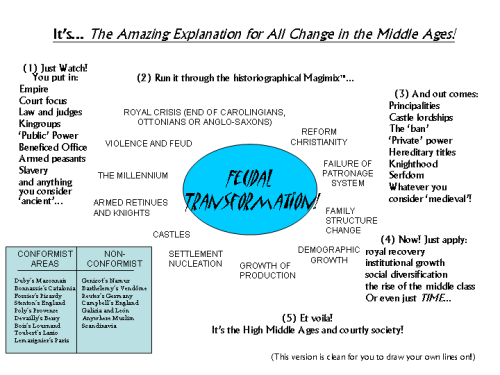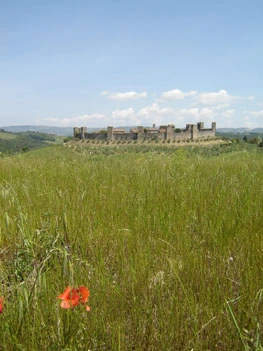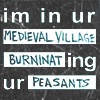Looking back on the last pre-Covid International Medieval Congress seems like a different world by now, even though we’ve but recently had the 2022 one, where, ironically or not, I caught my first dose of Covid. I guess that, because of that and because of the big push towards online hybrid participation that the pandemic gave us, it’s clear already that we’re never going back to quite the same experience of a campus full of medievalists meeting and interacting, but will now live with the sense, firstly, that that may be dangerous as well as desirable and that some people just aren’t going to be able to take part, and secondly that a lot of the action is in fact happening off-stage, in the ether.1 So this was the end of an era, or the last stop before a change of trains, or some other metaphor. And, to be honest, because of that, before picking up my notes on it I would have said I remembered very little of what happened at the 2019 Congress, as opposed to any other year since the IMC moved to the Central campus. I didn’t organise anything myself, is all I would have told you this morning, and on inspection that is completely untrue: Rethinking the Medieval Frontier ran for a full day, with people speaking from two continents about places from the Canaries to Kashmir. So as it transpires, I was there (obviously) and was pretty busy (nearly as obviously) and learnt a good few things (thankfully), and it was actually an impressively international and intersectional gathering that had all kinds of promise for the future threaded through it, and it still seems worth writing a report on it. It’s just that the future took a different turn… Because these reports are always huge, however, and not necessarily of interest to all (certainly not throughout), I’ll do what has become my practice and give you the running order of my conference experience, and then put actual commentary below a cut and let you decide (the few of you reading on the actual site rather than in your e-mail, anyway) how much further you care to go.
Monday 1st July 2019
119. Materialities at Birkbeck, I: between mind and matter in medieval monetary policy
- Rebecca Darley, “Discourses on Absence, or Kalabhra and Vakataka Monetary Policy in Early Medieval Southern India”
- Chris Budleigh, “Surplus and Scarcity: the contested relationship between monetary supply and aristocratic land management in Comnenian Byzantium”
- Sidin Sunny, “The Lighter Dirham: power relationships in medieval Spanish society and tendencies in coin fineness and debasement.”
240. The Use and Construction of Place, Space, and Materiality in Late Antiquity
- Edward James, “Materiality and the Holy in Gregory of Tours”
- Guy Halsall, “Trace, Space, Place: the materiality of identity”
- Catherine-Rose Hailstone, “Place and Space: Gregory, Materiality, and the Fear of God”
334. Seas and Floods in the Islamic West
- Andrew Marsham, “Nile Flood Levels and Egyptian Revolts in the Early Medieval Period”
- Xavier Ballestín, “Ships, Seafarers, Sails and Bows: a source approach to marine networks and coastal settlement in the Western Mediterranean basin on the eve of the rabaḍ uprising in Córdoba, 202 AH/818 AD”
- Maribel Fierro, “Sea in the Life Narratives of Andalusi Scholars and Saints”
Tuesday 2nd July
530. Rethinking the Medieval Frontier 2018, I: Iberian Spaces
- Jonathan Jarrett, “Ends of Empire: Two Island Frontiers between Byzantium and Islam”
- Stacey Murrell, “Centering the Marginal: concubines on Castilian frontiers, c. 1050-1350
- Sandra Schieweck, “Iberian Border Regimes: the case of Castile and Navarre in the late Middle Ages”
630. Rethinking the Medieval Frontier, 2018, II: Administration and Control
- Luca Zavagno, “‘The Byzantine Liquid Frontiers’, or How to Administer Insular and Coastal Peripheral Spaces and Stop Worrying About It”
- Davor Salihović, “The Distribution of Bordering in Late Medieval Hungary”
730. Rethinking the Medieval Frontier 2018, III: between religions
- Roberta Denaro, “Far from the Corrupting City: building the frontier as a stage for martyrdom and asceticism, 8th-10th centuries”
- Turaç Hakalmaz, “‘Islandness’ of a Coastal Kingdom: the case of Cilician Armenia”
- Aniket Tathagata Chettry, “Exploring the Complexities of a Brahmanical Frontier in Bengal”
830. Rethinking the Medieval Frontier 2018, IV: dealing with power on the frontier
- Jakub Kabala, “Claiming Authority over the Edge of the World: Frontier Strategies in Salzburg, c. 870″
- Zeynep Aydoğan, “Conquest and Territoriality in the Late Medieval Anatolian Frontiers”
- Andreas Obenaus, “To Whom Might/Do They Belong? Claims to Newly-Discovered Atlantic Islands in the Late Medieval Period”
Wednesday 3rd July 2019
1048. Forging Memory: false documents and historical consciousness in the Middle Ages, I
- Graham Barrett, “Charters, Forgeries, and the Diplomatic of Salvation in Medieval Iberia”
- Daria Safranova, “Using and Detecting Forged Charters in Northern Iberia, c. 900-1100″
- Levi Roach, “True Lies: Leo of Vercelli, Arduin of Ivrea, and the Struggle for Piedmont”
1140. Byzantine Materialities, II: Ephemera and Iconoclasm
- Rachel Banes, “You Can’t Write That Here! Mapping Religious and Secular Graffiti in Asia Minor, c. 300-700 CE”
- Daniel K. Reynolds, “Images, Icons and Apologetic: Christian Iconoclasm in Early Islamic Palestine”
- Leslie Brubaker, “Dancing in the Streets: the ephemera of Byzantine processions”
1252. Transport, Traders, and Trade Routes in Early Medieval Europe
- Ewa Magdalena Charowska, “Dugout Builders: the trademark of the Sclaveni in the 6th and 7th Centuries”
- Daniel Melleno, “From Strangers to Neighbors: Franks and Vikings in the late 9th century”
- Thomas Freudenhammer, “Rafica: early medieval caravan trade between the West Frankish kingdom and al-Andalus”
- Victor Farías Zurita, “Response”
1340. Byzantine Materialities, IV: workshops, trade and manuscripts
- Shaun Tougher, “Macedonian Materialities: the Menologion of Basil II”
- Chris Wickham, “Materialities of Middle Byzantine Exchange in the Aegean”
- Flavia Vanni, “Men at work: stucco workshops on Mount Athos”
Thursday 4th July 2019
1509. Gold, Coins and Power in the Early Middle Ages
- Marco Cristini, “The War of the Coins: Numismatic Evidence for the Gothic War”
- Nicholas Rogers, “Angels and the King’s Evil: projections of royal authority”
- Vera Kemper, “‘All that glitters is not gold’: heroes and material wealth”
1652. The Monetary System and Currency in Eurasia in the Pre-Modern Era, II: money and its circulation in British Isles and Scandinavia
- Yuta Uchikawa, “Commerce and Coin Circulation around the Irish Sea in the 9th and 10th Centuries”
- Hiroko Yanagawa, “The Irish-Sea Imitations and their Circulation during the Middle Ages”
- Kenji Nishioka, “The Use of Money in Scotland during the 12th and 13th Centuries”
- Takahiro Narikawa, “Church and the Money Circulation in High Medieval Norway”
1738. Materialities and Religion in Medieval Armenia and Byzantium
- Katherine New, “The Representations of Material Objects in Medieval Culture: statue or doll in Byzantine mythography”
- Carmen Morais Puche, “Medieval Byzantine Coinage in Patrimonio Nacional: image, materiality and religions”





